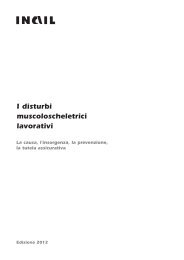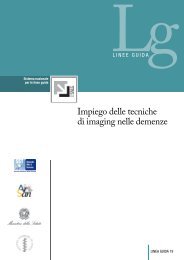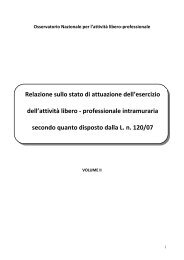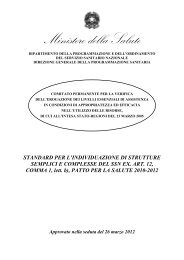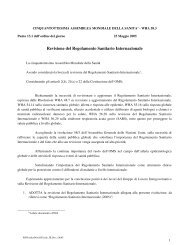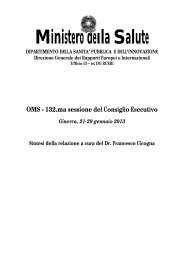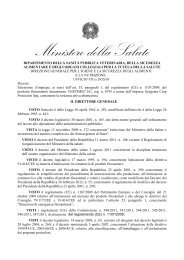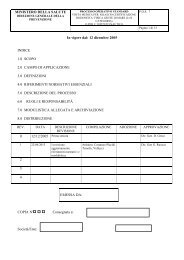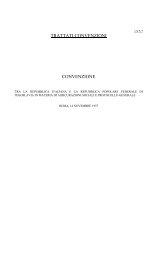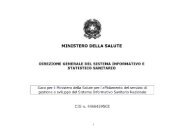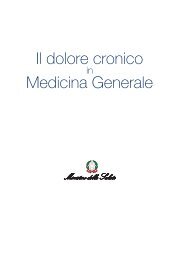hta_ knee intro.qxp - Ministero della Salute
hta_ knee intro.qxp - Ministero della Salute
hta_ knee intro.qxp - Ministero della Salute
You also want an ePaper? Increase the reach of your titles
YUMPU automatically turns print PDFs into web optimized ePapers that Google loves.
34<br />
chapter 6 for the systematic review of the evidence from formal studies). In particular, our aim<br />
was to collect, for each prosthesis model (identified by model name and manufacturer), performance<br />
estimates at 5 (and possibly 10) years’ follow-up.<br />
7.2 Methods for the identification and analysis of the <strong>knee</strong> registers<br />
We identified <strong>knee</strong> registers accessing the EFORT portal with related web-links 35 . For each<br />
register, we downloaded the last available periodic report.<br />
We were interested in collecting performance data for each <strong>knee</strong> system, i.e. revision (or survival)<br />
rate expressed as a percentage at a set follow-up period, reported in one or more registers.<br />
We performed a systematic comparison of the indicators of performance presented in the periodic<br />
reports.<br />
To compare data from registers with data from clinical studies, we took into account the detail<br />
of reporting of the population receiving the prosthesis. In particular, as the patient age was one<br />
of the inclusion criteria of our systematic review, we decided to consider this variable to stratify<br />
performance data for each specific implant model. We looked at each register’s last published<br />
periodic report for the data we needed and, when these were not reported, or when they were<br />
presented in an unsuitable format for our analysis, we corresponded with a key-person (e.g. the<br />
register’s coordinator) asking for additional data.<br />
7.3 Results<br />
By accessing the EFORT website we obtained 9 periodic reports: 6 from European countries<br />
and 3 from non-European countries (Table 7.1). By contacting key-persons we also became aware<br />
of other national registers (e.g., Austria, Czech Republic, France, Hungary, Italy, Slovak Republic,<br />
and Switzerland). However these registers are in their early implementation phases and no periodic<br />
reports were available for our analysis. We also intended to consider data from the Italian<br />
regional arthroplasty registers (Table 7.1). Two out of 21 regions (Emilia-Romagna and Lombardia)<br />
are currently using a register for <strong>knee</strong> implants.<br />
7.3.1 Comparison of format and content<br />
Among the 9 periodic reports of national registers identified (Table 7.1), none presented the<br />
data in the format we needed. From our comparison of the indicators of performance we noted<br />
that considerable heterogeneity in data reporting existed. The more important finding is that data<br />
referring to the implant survival, recognised by EAR/EFORT as one of the most important variables<br />
and included within the main aims of an arthroplasty register (see EFORT website 33 ), were<br />
often missing in the periodic reports or were reported only in cumulative form (e.g., per method<br />
of fixation, per age group).



